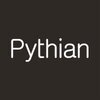Filter interviews by
Fragma Data Systems Interview Questions and Answers
15 Interview questions
Identify duplicate rows in a table
Use SQL query with GROUP BY and HAVING clause to identify duplicate rows based on specific columns
Example: SELECT column1, column2, COUNT(*) FROM table_name GROUP BY column1, column2 HAVING COUNT(*) > 1
Use PySpark code to connect data to ADLS with partitioning
Use SparkSession to create a Spark application
Set the configuration for ADLS storage account and container
Read data from ADLS using Spark DataFrame API
Partition the data based on a specific column while writing back to ADLS
Window functions are used to perform calculations across a set of table rows that are related to the current row.
Window functions are used in SQL to perform calculations on a specific subset of rows related to the current row.
They are often used with aggregate functions like SUM, AVG, and COUNT to calculate running totals, moving averages, and rankings.
Examples of window functions include ROW_NUMBER(), RANK(), LEA...
DAG stands for Directed Acyclic Graph, a data structure used to represent dependencies between tasks in a workflow.
DAG is a collection of nodes connected by edges, where each edge has a direction and there are no cycles.
It is commonly used in data engineering for representing data pipelines and workflows.
DAGs help in visualizing and optimizing the order of tasks to be executed in a workflow.
Popular tools like Apac...
The answer to the question is that in which state which gender makes the most purchases.
Aggregate the data by state and gender to calculate the total purchases made by each gender in each state.
Identify the gender with the highest total purchases in each state.
Present the results in a table or chart for easy visualization.
Only one job will run in parallel in Spark with four cores and four worker nodes.
In Spark, each core can only run one task at a time, so with four cores, only four tasks can run concurrently.
Since there are four worker nodes, each with four cores, a total of four tasks can run in parallel.
Therefore, only one job will run in parallel in this scenario.
ADF stands for Azure Data Factory, a cloud-based data integration service that allows you to create, schedule, and manage data pipelines.
ADF is used for building, scheduling, and monitoring data pipelines to move and transform data from various sources to destinations.
It supports data integration between various data stores such as Azure SQL Database, Azure Blob Storage, and on-premises data sources.
ADF provides a...
Use SQL to calculate the difference in marks for each student ID across different years.
Use a self join on the table to compare marks for the same student ID across different years.
Calculate the difference in marks by subtracting the marks from different years.
Group the results by student ID to get the difference in marks for each student.
Spark handles fault tolerance through resilient distributed datasets (RDDs) and lineage tracking.
Spark achieves fault tolerance through RDDs, which are immutable distributed collections of objects that can be rebuilt if a partition is lost.
RDDs track the lineage of transformations applied to the data, allowing lost partitions to be recomputed based on the original data and transformations.
Spark also replicates dat...
Lineage refers to the history and origin of data, including its source, transformations, and dependencies.
Lineage helps in understanding how data is generated, processed, and transformed throughout its lifecycle.
It tracks the flow of data from its source to its destination, including any intermediate steps or transformations.
Lineage is important for data governance, data quality, and troubleshooting data issues.
Ex...
Fragma Data Systems Interview Experiences
13 interviews found
I applied via Company Website and was interviewed in Nov 2024. There was 1 interview round.
(4 Questions)
- Q1. Self introduction
- Q2. Windows function and how you used
- Ans.
Window functions are used to perform calculations across a set of table rows that are related to the current row.
Window functions are used in SQL to perform calculations on a specific subset of rows related to the current row.
They are often used with aggregate functions like SUM, AVG, and COUNT to calculate running totals, moving averages, and rankings.
Examples of window functions include ROW_NUMBER(), RANK(), LEAD(), ...
- Q3. Sql Coding questions. Window functions with joins.
- Q4. Pyspark code for how you connect the data to ADLS with doing partition
- Ans.
Use PySpark code to connect data to ADLS with partitioning
Use SparkSession to create a Spark application
Set the configuration for ADLS storage account and container
Read data from ADLS using Spark DataFrame API
Partition the data based on a specific column while writing back to ADLS
I applied via Naukri.com and was interviewed in Aug 2024. There was 1 interview round.
(10 Questions)
- Q1. Tell me about yourself, and project architecture. What are your day-to-day responsibilities?
- Ans.
I am a Data Engineer with experience in designing and implementing project architectures. My day-to-day responsibilities include data processing, ETL tasks, and ensuring data quality.
Designing and implementing project architectures for data processing
Performing ETL tasks to extract, transform, and load data into the system
Ensuring data quality and integrity through data validation and cleansing
Collaborating with cross-...
- Q2. SQL: To calculate the difference in marks for each student ID and marks across different years?
- Ans.
Use SQL to calculate the difference in marks for each student ID across different years.
Use a self join on the table to compare marks for the same student ID across different years.
Calculate the difference in marks by subtracting the marks from different years.
Group the results by student ID to get the difference in marks for each student.
- Q3. SQL: Statewise which gender purchase is the most?
- Ans.
The answer to the question is that in which state which gender makes the most purchases.
Aggregate the data by state and gender to calculate the total purchases made by each gender in each state.
Identify the gender with the highest total purchases in each state.
Present the results in a table or chart for easy visualization.
- Q4. What is ADF ??
- Ans.
ADF stands for Azure Data Factory, a cloud-based data integration service that allows you to create, schedule, and manage data pipelines.
ADF is used for building, scheduling, and monitoring data pipelines to move and transform data from various sources to destinations.
It supports data integration between various data stores such as Azure SQL Database, Azure Blob Storage, and on-premises data sources.
ADF provides a visu...
- Q5. Pysaprk Coding Question?
- Q6. What is DAG ??
- Ans.
DAG stands for Directed Acyclic Graph, a data structure used to represent dependencies between tasks in a workflow.
DAG is a collection of nodes connected by edges, where each edge has a direction and there are no cycles.
It is commonly used in data engineering for representing data pipelines and workflows.
DAGs help in visualizing and optimizing the order of tasks to be executed in a workflow.
Popular tools like Apache Ai...
- Q7. What is Lineage ??
- Ans.
Lineage refers to the history and origin of data, including its source, transformations, and dependencies.
Lineage helps in understanding how data is generated, processed, and transformed throughout its lifecycle.
It tracks the flow of data from its source to its destination, including any intermediate steps or transformations.
Lineage is important for data governance, data quality, and troubleshooting data issues.
Example...
- Q8. How does Spark handle fault tolerance?
- Ans.
Spark handles fault tolerance through resilient distributed datasets (RDDs) and lineage tracking.
Spark achieves fault tolerance through RDDs, which are immutable distributed collections of objects that can be rebuilt if a partition is lost.
RDDs track the lineage of transformations applied to the data, allowing lost partitions to be recomputed based on the original data and transformations.
Spark also replicates data par...
- Q9. There are four cores and four worker nodes in Spark. How many jobs will run in parallel?
- Ans.
Only one job will run in parallel in Spark with four cores and four worker nodes.
In Spark, each core can only run one task at a time, so with four cores, only four tasks can run concurrently.
Since there are four worker nodes, each with four cores, a total of four tasks can run in parallel.
Therefore, only one job will run in parallel in this scenario.
- Q10. What are the optimisation techniques you have used in your project ?
- Ans.
I have used techniques like indexing, query optimization, and parallel processing in my projects.
Indexing: Used to improve the speed of data retrieval by creating indexes on columns frequently used in queries.
Query optimization: Rewriting queries to improve efficiency and reduce execution time.
Parallel processing: Distributing tasks across multiple processors to speed up data processing.
Caching: Storing frequently acce...
Skills evaluated in this interview
(2 Questions)
- Q1. Problem solving in js.
- Q2. Javascript o/p question
(1 Question)
- Q1. General HR discussions
(1 Question)
- Q1. Basic React questions, Javascript questions, one coding exercise
(1 Question)
- Q1. Find duplicate rows in the given table
- Ans.
Identify duplicate rows in a table
Use SQL query with GROUP BY and HAVING clause to identify duplicate rows based on specific columns
Example: SELECT column1, column2, COUNT(*) FROM table_name GROUP BY column1, column2 HAVING COUNT(*) > 1
(2 Questions)
- Q1. Coding question for count occurence of string
- Ans.
Count occurrences of a specific string in an array of strings efficiently.
Use a loop to iterate through the array and a counter to track occurrences.
Example: For array ['apple', 'banana', 'apple'], count 'apple' returns 2.
Consider using a hash map for larger datasets to improve performance.
Example: {'apple': 2, 'banana': 1} for the previous array.
- Q2. Java basic question with exception handling
(2 Questions)
- Q1. Microservice question
- Q2. Spring batch working flow
Interview Preparation Tips
(1 Question)
- Q1. Javascript based coding question
I appeared for an interview before Oct 2022.

1.ETL Pipeline
2.PySpark Code
3.SQL
(2 Questions)
- Q1. 1.sql easy question 2.pyspark easy code as I was fesher
- Q2. 1.query related to group by
- Ans.
Group by is a SQL clause used to aggregate data based on one or more columns.
Used to group rows that have the same values in specified columns.
Commonly used with aggregate functions like COUNT, SUM, AVG.
Example: SELECT department, COUNT(*) FROM employees GROUP BY department;
Can include HAVING clause to filter groups based on aggregate values.
Example: SELECT department, AVG(salary) FROM employees GROUP BY department HAV...
(1 Question)
- Q1. 1.One tricky sql query 2.What is sqoop?sqoop performs which job - map or reduce?
I applied via Cutshort.io and was interviewed in Nov 2021. There were 3 interview rounds.
Interview Questionnaire
1 Question
- Q1. SCD type 2 mapping, Store procedure and functions, ETL and Query Optimisation, Data warehousing and UNIX
Interview Preparation Tips
I applied via Internshala and was interviewed before Sep 2021. There were 5 interview rounds.

I was given a pdf file containing 3 Problem statements along with the output for which I had to write SQL queries.
(3 Questions)
- Q1. Theoretical Questions related to SQL were asked like types of join, the difference between union and join, related to my project, and some behavioral questions.
- Q2. What are different types of Joins?
- Ans.
Joins are used to combine data from two or more tables based on a related column between them.
Inner Join: returns only the matching rows from both tables
Left Join: returns all rows from the left table and matching rows from the right table
Right Join: returns all rows from the right table and matching rows from the left table
Full Outer Join: returns all rows from both tables
Cross Join: returns the Cartesian product of b...
- Q3. What is the Difference between Union and Joins
- Ans.
Joins combine rows from two or more tables based on a related column, while unions combine rows from two or more tables with the same structure.
Joins are used to combine data from different tables based on a related column
Unions are used to combine data from tables with the same structure
Joins can be inner, left, right, or full, while unions are always a combination of all rows
Joins can have multiple conditions, while ...
(1 Question)
- Q1. Scenario-based questions on SQL
(1 Question)
- Q1. Questions related to me like what my parents do etc. and their company profile.
Interview Preparation Tips
Skills evaluated in this interview
I appeared for an interview in Jun 2021.
Interview Questionnaire
1 Question
- Q1. Basic questions and aptitute
Interview Preparation Tips
Top trending discussions






Fragma Data Systems Interview FAQs
Some of the top questions asked at the Fragma Data Systems interview -
Tell us how to improve this page.
Fragma Data Systems Interviews By Designations
- Fragma Data Systems Data Engineer Interview Questions
- Fragma Data Systems Machine Learning Scientist - Big Data/NLP Interview Questions
- Fragma Data Systems Data Scientist Interview Questions
- Fragma Data Systems Technical Lead Interview Questions
- Fragma Data Systems Software Engineer Interview Questions
- Fragma Data Systems Informatica Developer Interview Questions
- Fragma Data Systems Senior Software Engineer Interview Questions
- Fragma Data Systems Business Analyst Interview Questions
- Show more
Interview Questions for Popular Designations
- Executive Interview Questions
- Software Engineer Interview Questions
- Intern Interview Questions
- Business Analyst Interview Questions
- Associate Software Engineer Interview Questions
- Senior Software Engineer Interview Questions
- Data Analyst Interview Questions
- HR Executive Interview Questions
- Show more
Overall Interview Experience Rating
based on 6 interview experiences
Difficulty level
Duration
Interview Questions from Similar Companies
Fragma Data Systems Reviews and Ratings
based on 120 reviews
Rating in categories
15-20 Yrs
Not Disclosed
5-10 Yrs
Not Disclosed
|
Data Engineer
53
salaries
| ₹5.8 L/yr - ₹18 L/yr |
|
Software Engineer
29
salaries
| ₹4.7 L/yr - ₹24 L/yr |
|
Business Analyst
24
salaries
| ₹3.5 L/yr - ₹6 L/yr |
|
Senior Software Engineer
22
salaries
| ₹10 L/yr - ₹36 L/yr |
|
Data Analyst
13
salaries
| ₹3.5 L/yr - ₹6.4 L/yr |

SE2 DIGITAL SERVICE LLP

Pragmasys Consulting LLP

Vowelweb
TantranZm Technologies
- Home >
- Interviews >
- Fragma Data Systems Interview Questions















